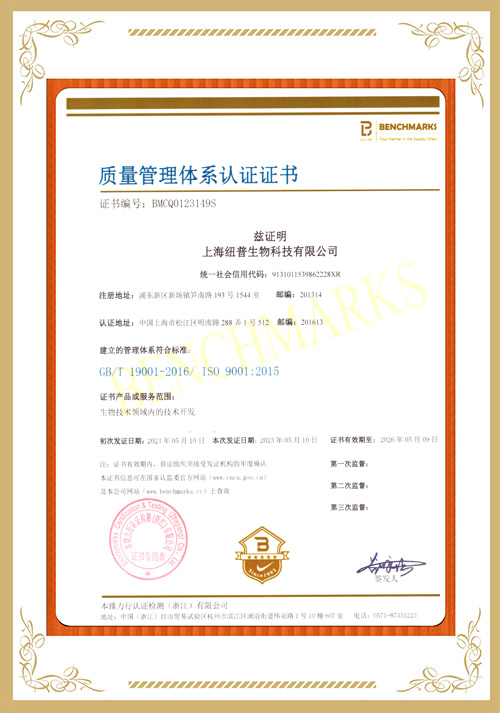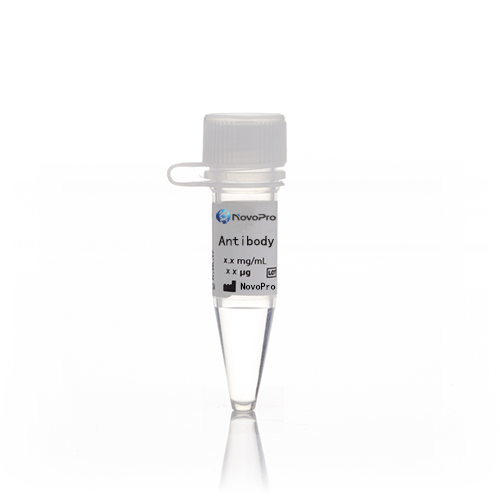- 抗体类型:多克隆
- 抗体来源:兔
- 抗体应用:ELISA, WB, IP, IHC, IF
- 特异性:Human,Mouse,Rat, Dog; other species not tested.
产品详情
-
产品名称
IFT88 antibody
-
抗体类型
多克隆
-
抗体来源
兔
-
抗体亚型
兔IgG
-
抗体描述
IFT88 Rabbit Polyclonal antibody. Positive WB detected in HEK-293 cells, A549 cells, HepG2 cells, Jurkat cells, K-562 cells, mouse brain tissue, mouse eye tissue, mouse kidney tissue, mouse testis tissue, mouse thymus tissue, NIH/3T3 cells. Positive IP detected in kn℃kout cells and WT cells, HEK-293 cells. Positive IHC detected in human heart tissue, human pancreas tissue. Positive IF detected in MDCK cells, hTERT-RPE1 cells. Observed molecular weight by Western-blot: 88-95 kDa
-
抗体应用
ELISA, WB, IP, IHC, IF
-
应用推荐
Recommended Dilution:
WB: 1:200-1:2000
IP: 1:200-1:2000
IHC: 1:20-1:200
IF: 1:20-1:200
-
特异性
Human,Mouse,Rat, Dog; other species not tested.
-
蛋白别名
IFT88, TPR repeat protein 10, TTC10
-
制备方法
This antibody was obtained by immunization of IFT88 recombinant protein (Accession Number: NM_001353567). Purification method: Antigen affinity purified.
-
组分
PBS with 0.02% sodium azide and 50% glycerol pH 7.3.
-
储存方法
Store at -20℃. DO NOT ALIQUOT
-
背景介绍
Intraflagellar transport (IFT), mediated by molecular motors and IFT particles, is an important transport process that occurs in the cilium and has been shown to be essential for the assembly and maintenance of cilia and flagella in many organisms. IFT88 (intraflagellar transport protein 88; also known as TG737 or TTC10) is a component of IFT particles and required for cilium biogenesis. Defects in IFT88/Tg737 lead to polycystic kidney disease (11062270). IFT88 localizes to spindle poles during mitosis and is required for spindle orientation in mitosis (21441926). This antibody was raised against the C-terminal region of human IFT88 and can detect the endogenous level of IFT88.
-
参考文献
- Ezratty EJ, Stokes N, Chai S, Shah AS, Williams SE, Fuchs E. A role for the primary cilium in Notch signaling and epidermal differentiation during skin development. Cell. 145(7):1129-41. 2011.
- Kodani A, Salomé Sirerol-Piquer M, Seol A, Garcia-Verdugo JM, Reiter JF. Kif3a interacts with Dynactin subunit p150 Glued to organize centriole subdistal appendages. The EMBO journal. 32(4):597-607. 2013.
- Lai CK, Gupta N, Wen X. Functional characterization of putative cilia genes by high-content analysis. Molecular biology of the cell. 22(7):1104-19. 2011.
- Zhang Q, Seo S, Bugge K, Stone EM, Sheffield VC. BBS proteins interact genetically with the IFT pathway to influence SHH-related phenotypes. Human molecular genetics. 21(9):1945-53. 2012.
- Firestone AJ, Weinger JS, Maldonado M. Small-molecule inhibitors of the AAA+ ATPase motor cytoplasmic dynein. Nature. 484(7392):125-9. 2012.
- Liem KF, Ashe A, He M. The IFT-A complex regulates Shh signaling through cilia structure and membrane protein trafficking. The Journal of cell biology. 197(6):789-800. 2012.
- Kobayashi T, Tsang WY, Li J, Lane W, Dynlacht BD. Centriolar kinesin Kif24 interacts with CP110 to remodel microtubules and regulate ciliogenesis. Cell. 145(6):914-25. 2011.
- Goetz SC, Liem KF, Anderson KV. The spinocerebellar ataxia-associated gene Tau tubulin kinase 2 controls the initiation of ciliogenesis. Cell. 151(4):847-58. 2012.


